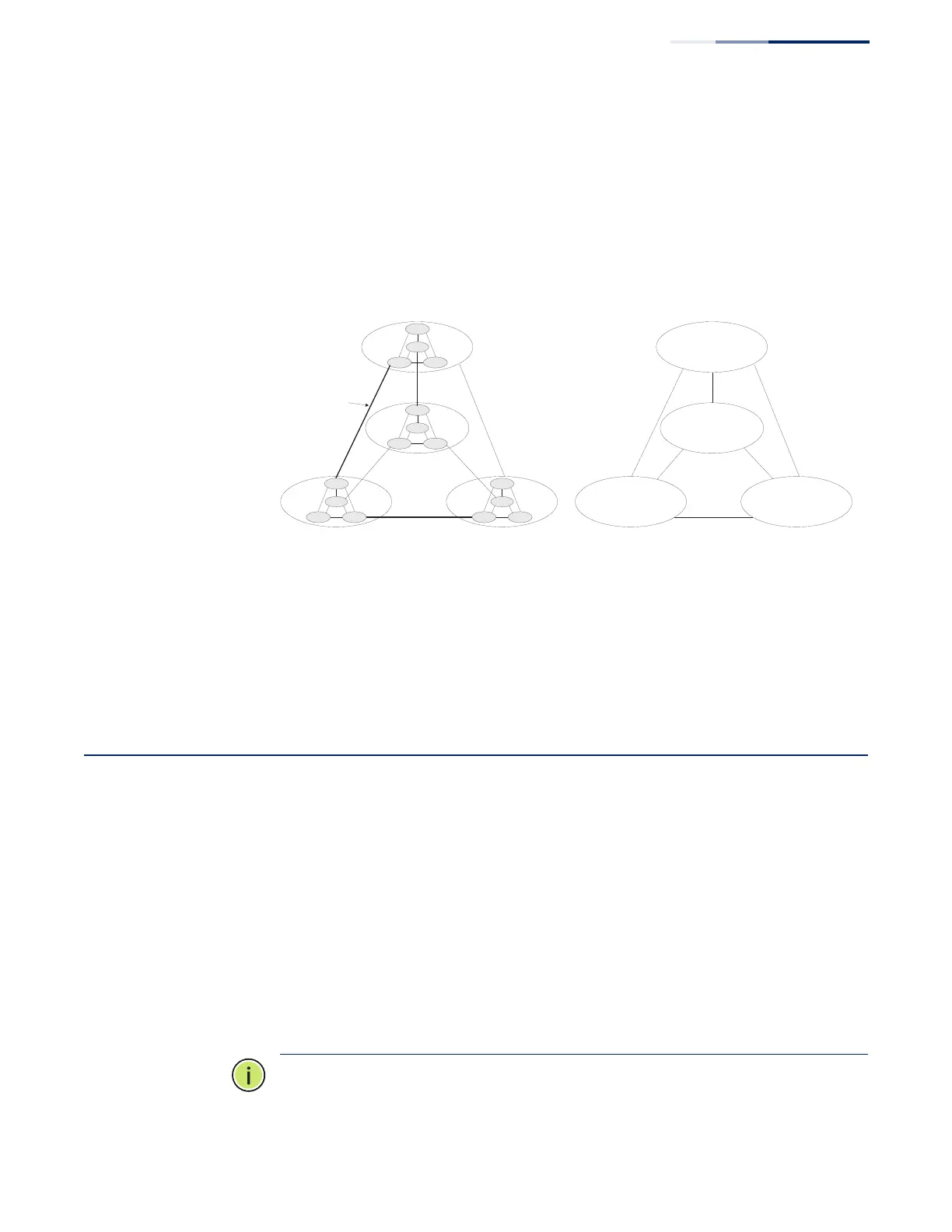Chapter 7
| Spanning Tree Algorithm
Configuring Loopback Detection
– 209 –
An MST Region consists of a group of interconnected bridges that have the same
MST Configuration Identifiers (including the Region Name, Revision Level and
Configuration Digest – see “Configuring Multiple Spanning Trees” on page 224). An
MST Region may contain multiple MSTP Instances. An Internal Spanning Tree (IST)
is used to connect all the MSTP switches within an MST region. A Common
Spanning Tree (CST) interconnects all adjacent MST Regions, and acts as a virtual
bridge node for communications with STP or RSTP nodes in the global network.
Figure 111: Spanning Tree – Common Internal, Common, Internal
MSTP connects all bridges and LAN segments with a single Common and Internal
Spanning Tree (CIST). The CIST is formed as a result of the running spanning tree
algorithm between switches that support the STP, RSTP, MSTP protocols.
Once you specify the VLANs to include in a Multiple Spanning Tree Instance (MSTI),
the protocol will automatically build an MSTI tree to maintain connectivity among
each of the VLANs. MSTP maintains contact with the global network because each
instance is treated as an RSTP node in the Common Spanning Tree (CST).
Configuring Loopback Detection
Use the Spanning Tree > Loopback Detection page to configure loopback
detection on an interface. When loopback detection is enabled and a port or trunk
receives it’s own BPDU, the detection agent drops the loopback BPDU, sends an
SNMP trap, and places the interface in discarding mode. This loopback state can be
released manually or automatically. If the interface is configured for automatic
loopback release, then the port will only be returned to the forwarding state if one
of the following conditions is satisfied:
◆ The interface receives any other BPDU except for it’s own, or;
◆ The interfaces’s link status changes to link down and then link up again, or;
◆ The interface ceases to receive it’s own BPDUs in a forward delay interval.
Note:
If loopback detection is not enabled and an interface receives it's own BPDU,
then the interface will drop the loopback BPDU according to IEEE Standard 802.1w-
2001 9.3.4 (Note 1).
Region 1
Region 4
Region 2 Region 3
CIST
IST
Region 1
Region 4
Region 2 Region 3
CST

